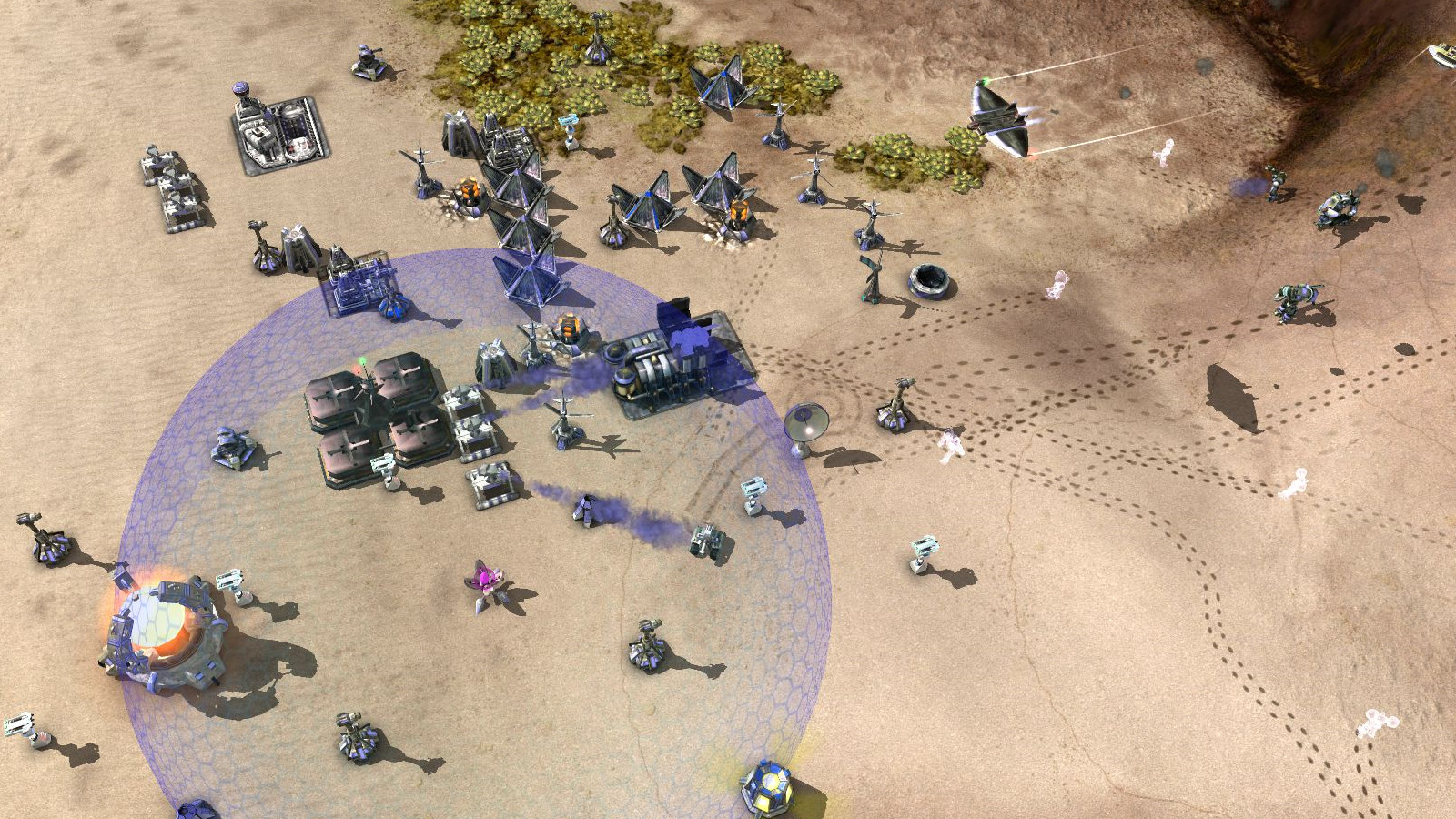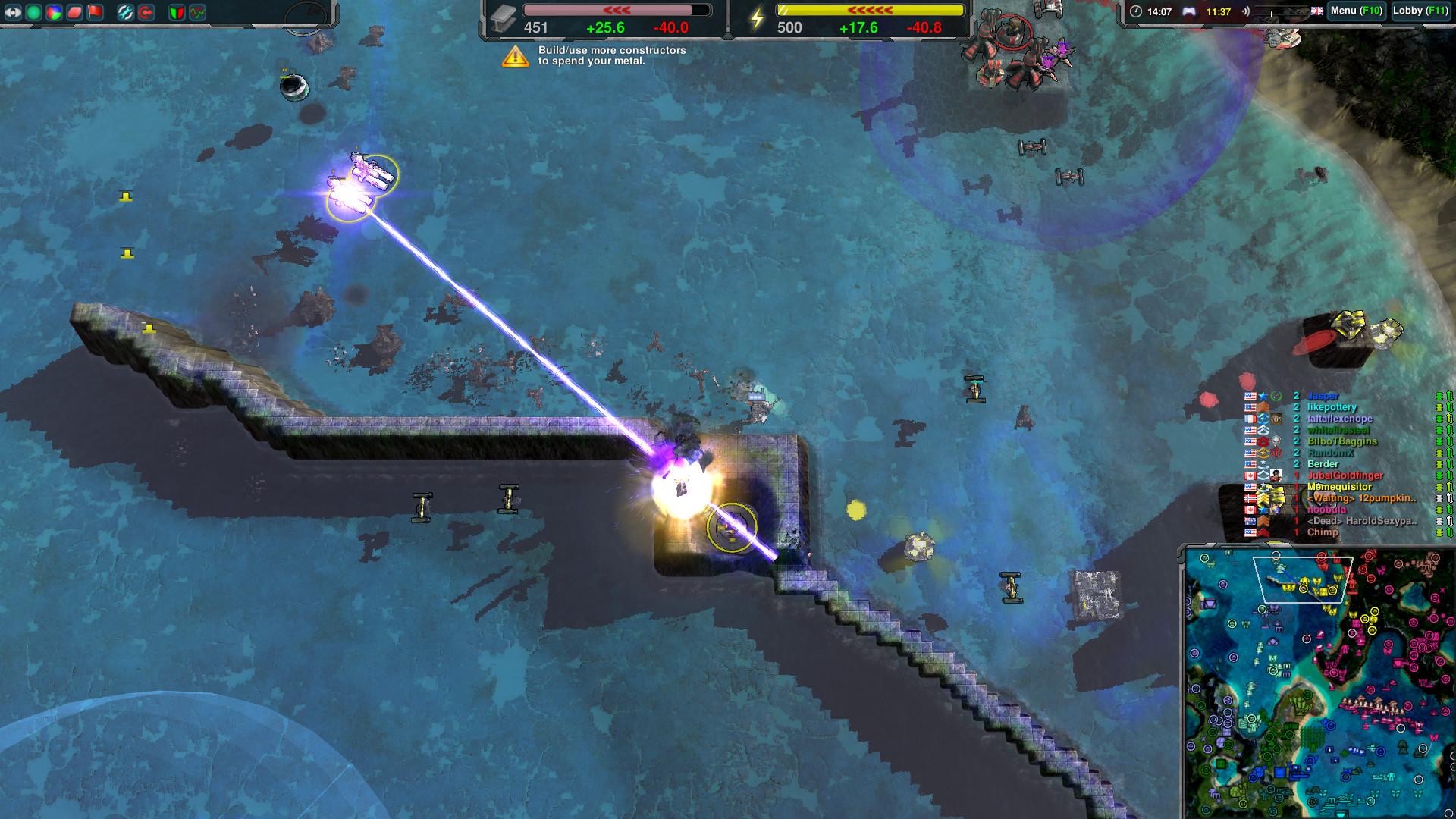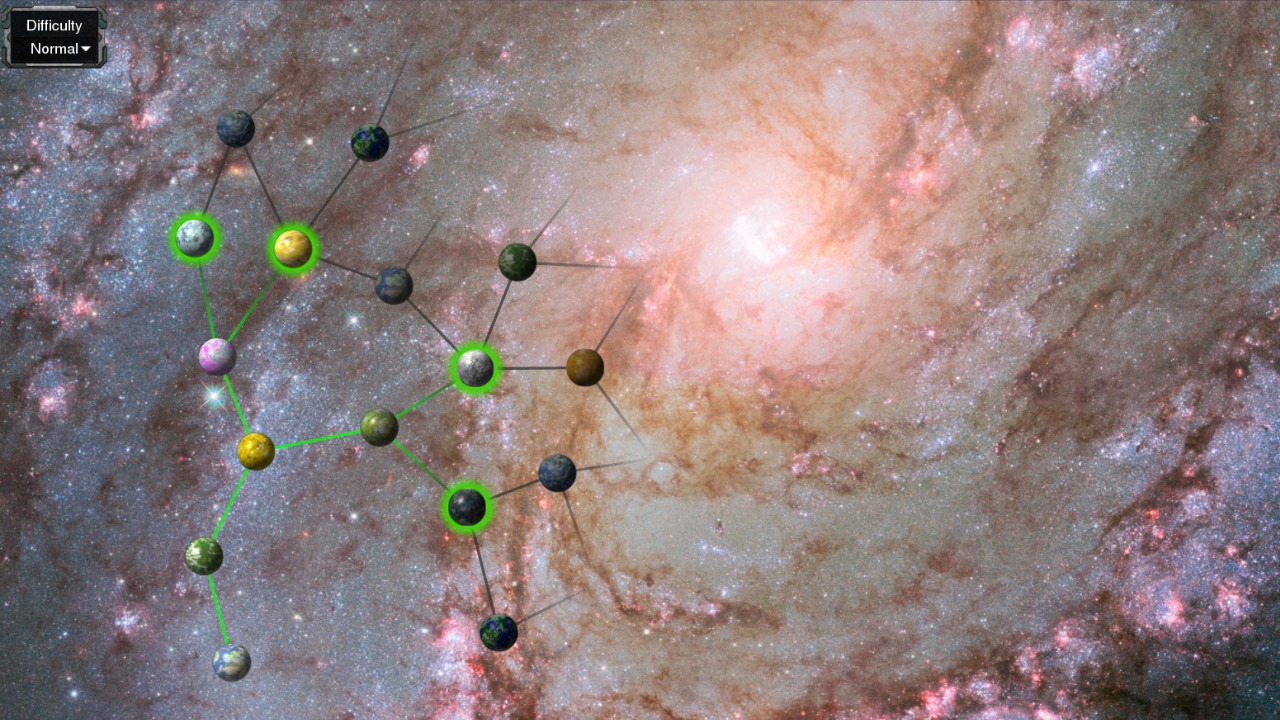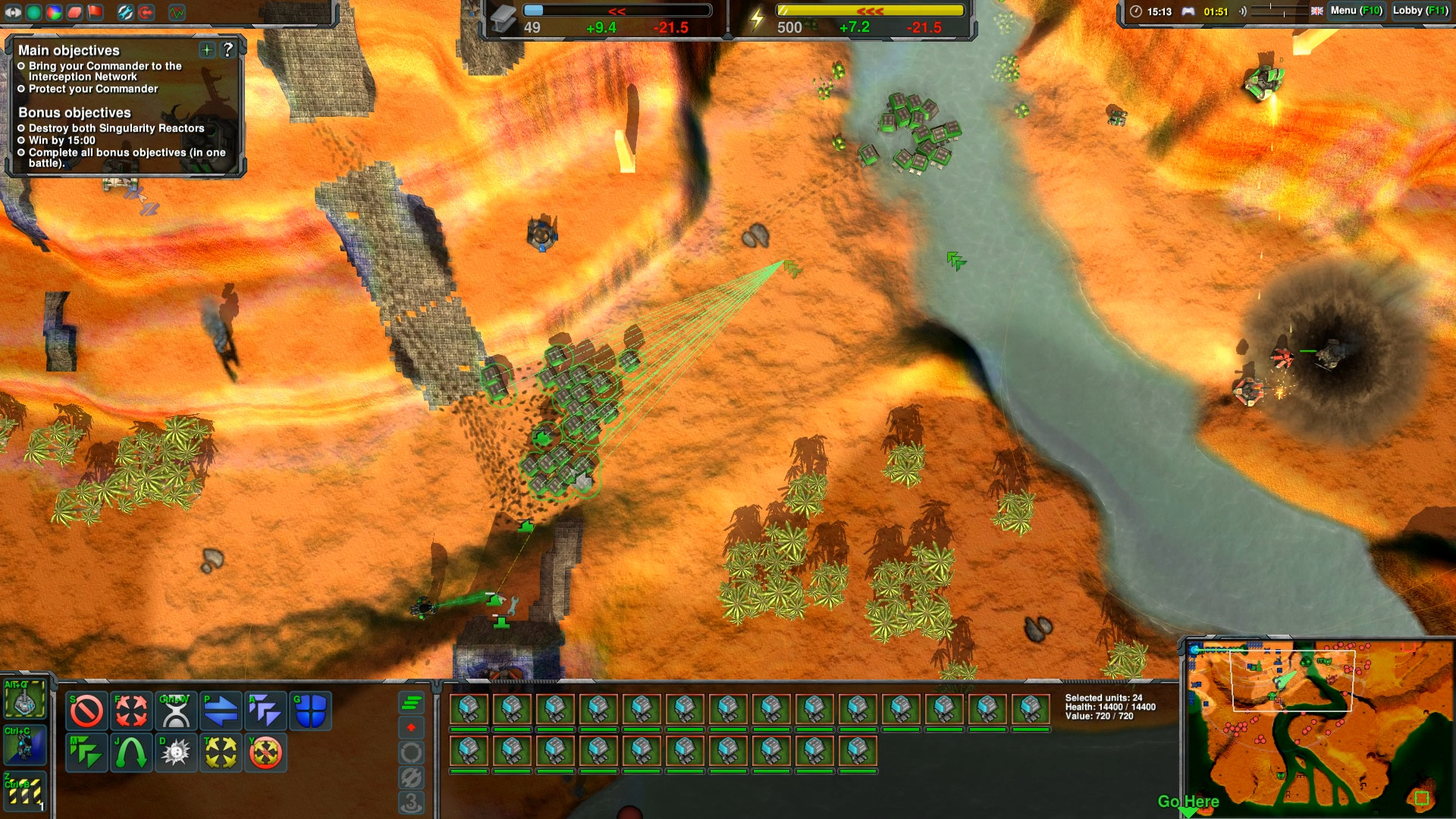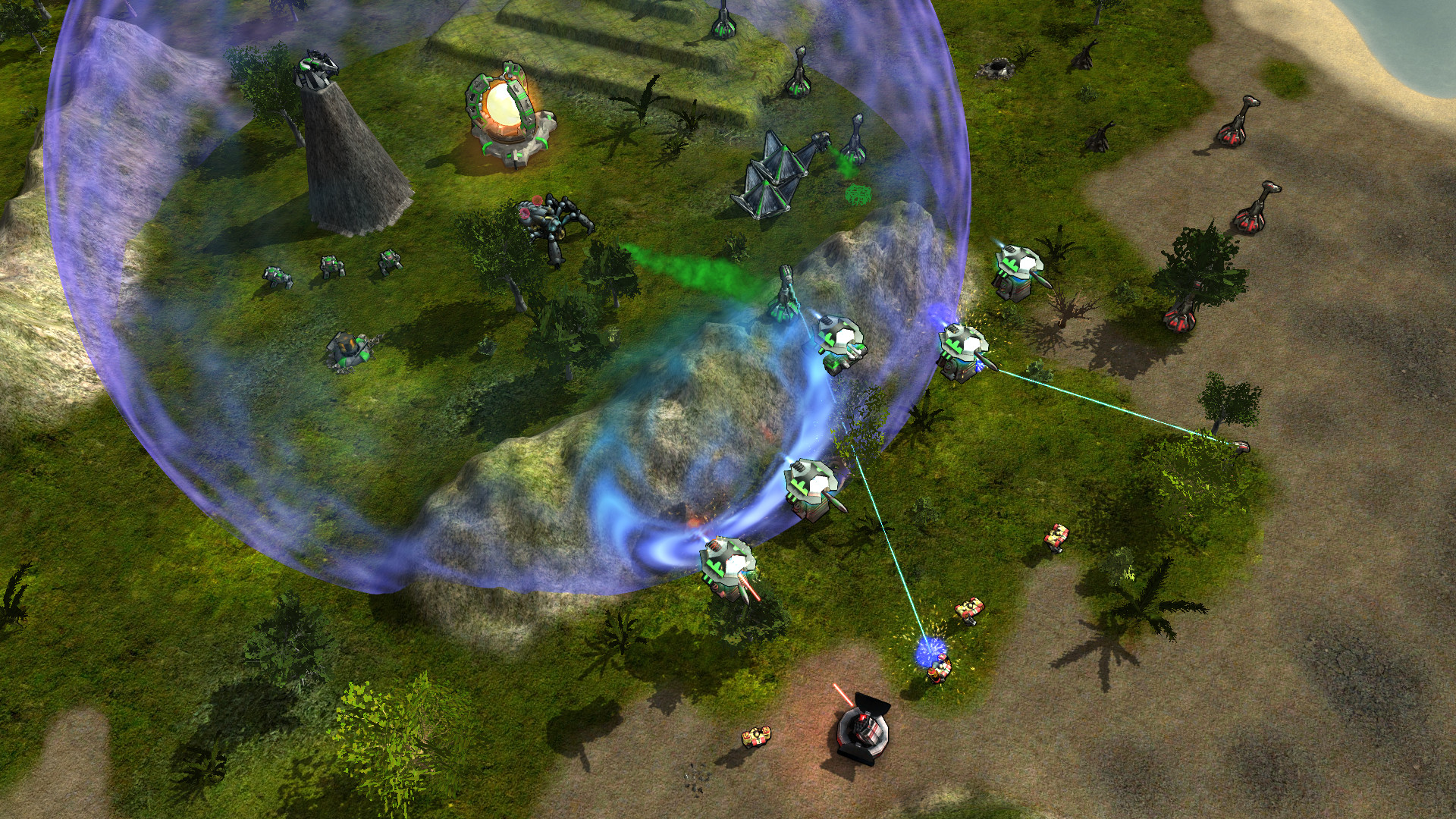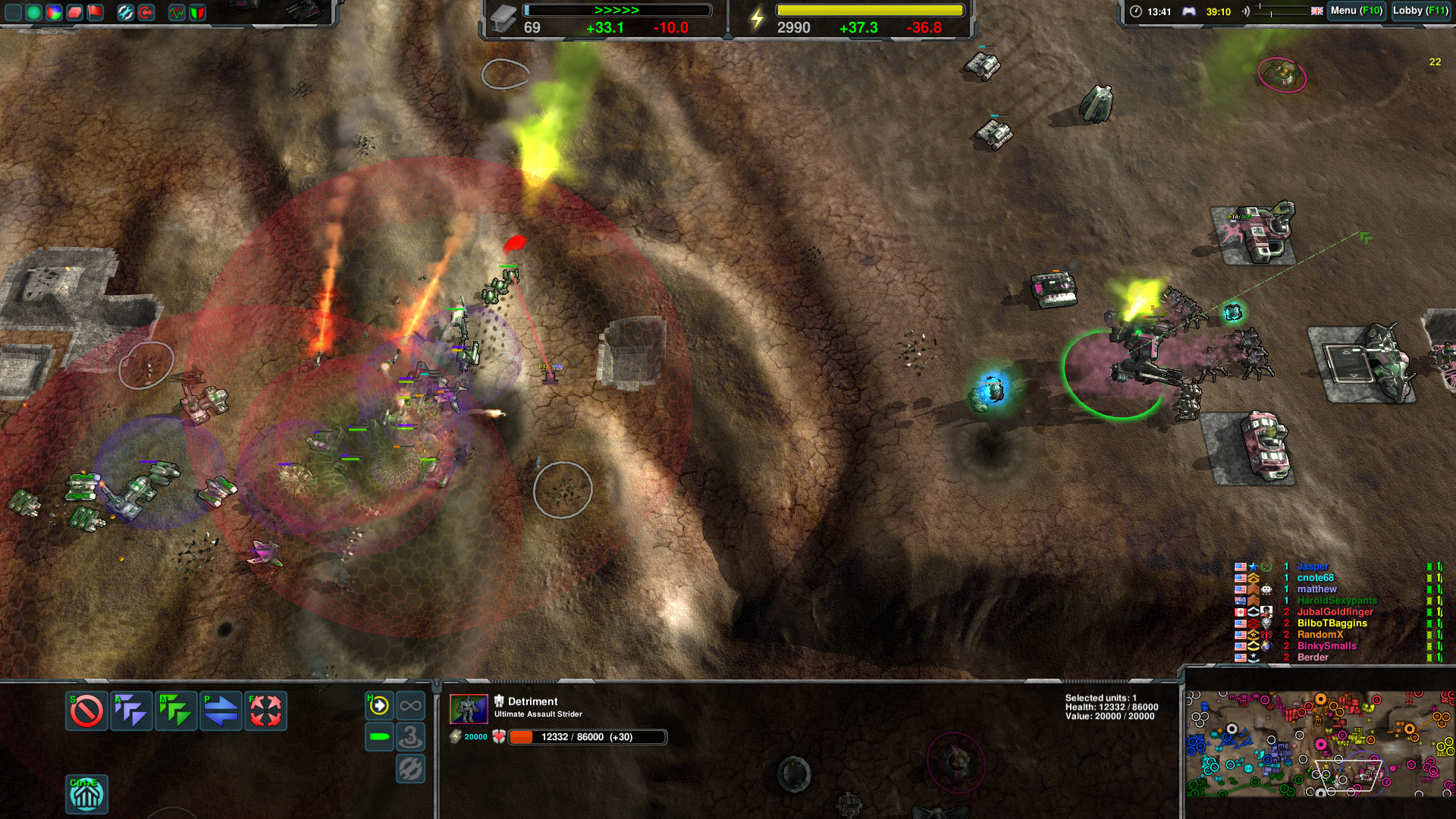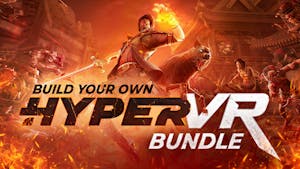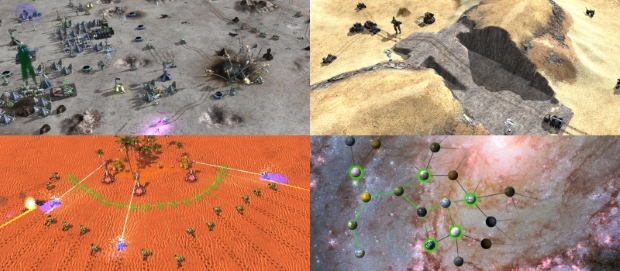
Commander wanted! Construct giant robots, build an army of a thousand Fleas. Move mountains if needed. Bury the enemy at all cost!
- Traditional real time strategy with physically simulated units and projectiles.
- 100+ varied units with abilities including terrain manipulation, cloaking and jumpjets.
- 70+ mission galaxy-spanning campaign to be enjoyed solo or co-op with friends.
- Challenging, (non-cheating) skirmish AI and survival mode.
- Multiplayer 1v1 - 16v16, FFA, coop. ladders, replays, spectators and tournaments.
- PlanetWars - A multiplayer online campaign planned to start in May.
- Really free, no paid advantages, no unfair multiplayer.
Fully Utilized Physics
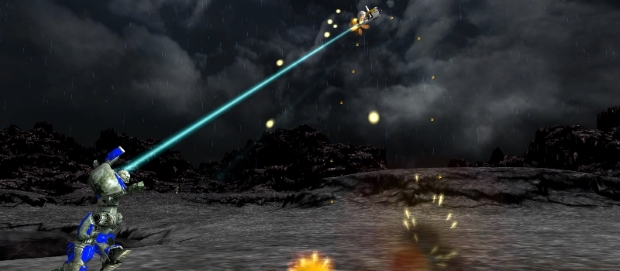
Simulated unit and projectile physics is used to a level rarely found in a strategy game.
- Use small nimble units to dodge slow moving projectiles.
- Hide behind hills that block weapon fire, line of sight and radar.
- Toss units across the map with gravity guns.
- Transport a battleship to a hilltop - for greater views and gun range.
Manipulate the Terrain
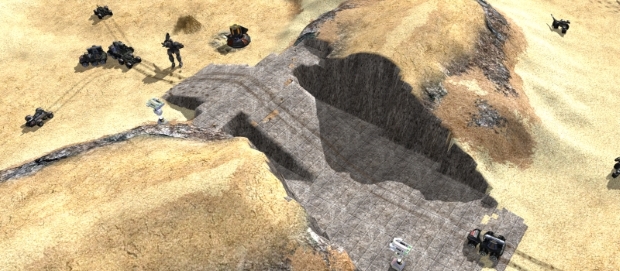
The terrain itself is an ever-changing part of the battlefield.
- Wreck the battlefield with craters that bog down enemy tanks.
- Dig canals to bring your navy inland for a submarine-in-a-desert strike.
- Build ramps, bridges, entire fortress if you wish.
- Burn your portrait into continental crust using the planetary energy chisel.
Singleplayer Campaign and Challenging AI

Enjoy many hours of single player and coop fun with our campaign, wide selection of non-cheating AIs and a survival mode against an alien horde.
- Explore the galaxy and discover technologies in our singleplayer campaign.
- Face a challenging AI that is neither brain-dead nor a clairvoyant cheater.
- Have some coop fun with friends, surviving waves of chicken-monsters.
- Cloaking? Resurrection? Tough choices customizing your commander.
Casual and Competitive Multiplayer

Zero-K was built for multiplayer from the start, this is where you can end up being hooked for a decade.
- Enjoying epic scale combat? Join our 16v16 team battles!
- Looking for a common goal? Fight AIs or waves of chicken-monsters.
- Prefer dancing on a razor's edge? Play 1v1 in ladder and tournaments.
- Comebacks, betrayals, emotions always running high in FFA.
- Want to fight for a bigger cause? Join PlanetWars, a competitive online campaign with web-game strategic elements, diplomacy and backstabbing (currently on hiatus pending an overhaul).
Power to the People
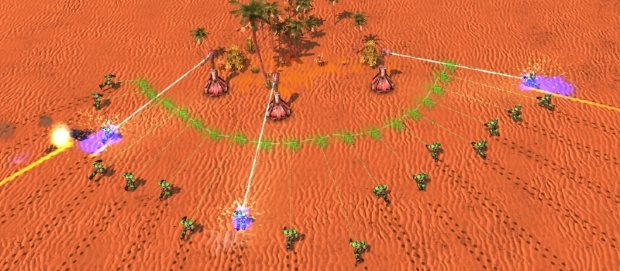
We are RTS players at heart, we work for nobody. We gave ourselves the tools we always wanted to have in a game.
- Do what you want. No limits to camera, queue or level of control.
- Paint a shape, any shape, and units will move to assume your formation.
- Construction priorities let your builders work more efficiently.
- Don't want to be tied down managing every unit movement? Order units to smartly kite, strafe or zig zag bullets.
Plenty of Stuff to Explore (and Explode)
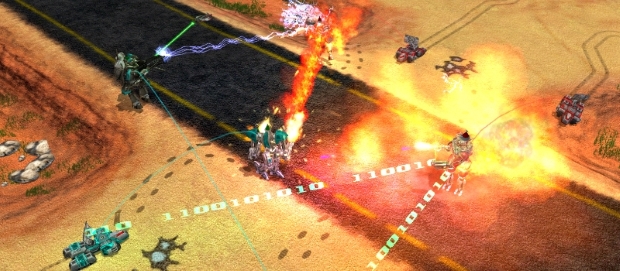
Zero-K is a long term project and it shows, millions hours of proper multiplayer testing and dozens of people contributing ever expanding content.
- Learn to use all of our 100+ units and play on hundreds of maps.
- Invent the next mad team-tactics to shock enemies and make allies laugh.
- Combine cloaking, teleports, shields, jumpjets, EMP, napalm, gravity guns, black hole launchers, mind control and self-replication.
- Tiny flea swarm that clings to walls?
- Jumping "cans" with steam-spike?
- Buoys that hide under water to ambush ships?
- Mechs that spew fire and enjoy being tossed from air transports?
- Carrier with cute helicopters?
- Jumping Jugglenaut with dual wielding gravity guns?
- Meet them in Zero-K!
Light units are great at absorbing large amounts of burst damage. A burst, i.e. a single high-damage shot, from a Heavy Laser Turret may evaporate a Flea, but at least it only kills one Flea. Recluse also dies in one shot, and costs ten times more, so Flea is a comparatively efficient absorber (or rather, waster) of burst damage. High burst and wasted damage is used throughout Zero-K, in part to fill a gap left by our no-damage multiplier policy , but mostly to fulfil a desire for big impactful weapons.

Burst is nothing new, since reload time is fundamental to RTS, and most games have at least some variety. Discussions in Zero-K also use "alpha" as a synonym for burst, which a quick search suggests may be due to early cross pollination from Eve Online. In terms of balance, there is a tradeoff between burst and sustained damage (DPS), as burst tends to make a unit more powerful, with the large caveat of wasting damage to overkill. Burst lets units front-load damage, since they start the battle fresh, which increases their effective damage output and limits retaliation. In terms of the feel of the game, large units one-shotting smaller ones reinforces a sense of scale, and the potential for burst adds variety and excitement to battles.
Zero-K likes to explore the extremes of design space , so we have ended up with some quite bursty units. Lance fires once every 23 seconds, significantly more than the six second fire rate of its ancestor in Total Annihilation . Such a long reload time would not be out of place on a manual ability in other games, and Zero-K players often use these weapons as manual abilities. This is done by toggling the hold fire unit state, which lets players take direct control when required, without fighting the UI the rest of the time. Units exist across a range of reload times, with units even as low as 10 seconds frequently being set to hold fire to snipe commanders.

As alluded to earlier, burst can be used to specialise weaponry against heavy units. Raiders swarming a Heavy Laser Turret is the classic example, but this applies whenever a projectile from a heavy tank or artillery piece would deal far more damage than necessary. Conversely, riot units should have low reload times, to deal with swarms of units. Raider against raider is an interesting case, since a bit of burst is quite an advantage, but one that can vary a lot across matchups. The bursty light raiders - Duck and Dagger - have been particularly hard to balance, and are yet to find a really good spot. The problem is not even due to raw overkill, but rather, the more subtle issue of breakpoints.
Burst damage is important even when it is not dispatching foes in one shot. Consider Dagger, a light raider that deals 110 damage every 2.83 seconds. Light raiders have between 200 and 500 health, so the exact damage of Dagger compared to the health of any given raider can be quite important. For example Bandit has 340 health and Glaive has 230 health, letting Dagger kill them in four and three shots respectively. If, for some reason, Bandit needed a nerf against Dagger specifically, we could reduce Bandit health to 330. This would barely affect its other matchups, but would effectively reduce its "health" against Dagger by 25%. Alternatively, we could increase Dagger damage to 114. The current incarnation of Dagger has dealt as little as 95 damage, but no higher than 110, because we do not want to cross the Bandit burst threshold.
Some weapons are so impactful, so ubiquitous, that they warp the rest of the game around them. The prime example is Raven, a bomber with an 800 damage bomb. Bombers shoot one shot before returning to base to reload, so their burst is very important. Raven was the dominant bomber for over a decade, so units lived or died on their interaction with it. The lightest riot unit - Reaver - has 820 health because being sniped by a single Raven leaves its factory too vulnerable to raider follow-up. Mace, which costs nearly twice as much as Reaver, has been plagued by only having 1400 health, and Light Laser Turrets have 785 health to let Ravens clear them out. The Recon Commander Chassis has 3250 base health, because commanders were balanced around how expensive they were to bomb. Factories have 4000 health because it is assumed that a nearby constructor can repair them mid-bombing, allowing them to just barely survive five Ravens.

Other sources of burst damage are important, but not as impactful. Lance deals 3000 damage with its heavy laser, further preventing commander health from dropping below 3000. Similarly, Phantom, a cloaked sniper, deals 1500 damage. Phantom demonstrates how balancing around breakpoints can become a bit silly, since Felon was buffed to 1600 health specifically to avoid being one-shot by Phantom. The Felon is the signature Shieldbot unit, and costs almost as much as a Phantom, the signature Cloakbot unit, so losing it in one shot was too punishing. Tuning Felon health to Phantom burst let us make a change that barely affected other matchups, since dealing an extra 100 damage is not too onerous for most other units. So burst is a good tool for precision-balance, however, overuse can make interactions feel gamey, less "natural".
Imagine a Felon with 1501 health. At a mechanical level, such a unit is fine, but it would look odd whenever it survived a Phantom shot with one hit point. The injunction against Felon having 1501 health is akin to the verisimilitude principle from Aim and Fire , namely, that a "real" Phantom could surely "overclock" its rifle to eke out an extra 0.1% damage. So it is for this reason that we stick to reasonably round numbers for health and damage. A Felon with 1600 health looks more natural, even though 1501 health would achieve the same balance goal.
There is a limit to how close damage can be to health, and that limit seems to be 20. Consider Reaver with its 820 health against Raven. Two other cases are evident in the precise light skirmishers: Moderator and Scalpel. These units deal busts of 460 and 660 damage respectively, and each have 20 more health than their burst. We decided, long ago, that having such units 1-shot each other was far too swingy, and that making units uniquely bad against themselves would encourage more interesting army compositions. Lance does not get the same treatment, since being unable to see as far as they can fire already creates enough counterplay, and artillery should be particularly flimsy.

Revenant vs. Engineer Commander is a notable recent example of balancing by burst breakpoints. Revenant is a tanky gunship that fires a burst of medium damage missiles, and it was a bit underpowered, so we gave it an extra missile . This increased its damage to 1980 (9 missiles, 220 damage each), which let it 2-shot un-upgraded 3800 health Engineers. This went unnoticed for many months, until Engineer gained the blueprint ability , increasing its popularity on the front lines, which in turn increased the viability of rushing a Revenant to snipe commanders. The resulting nerfs included reducing missile damage to 210, for total burst of 1890, leaving Revenant 20 damage shy of 2-shotting Engineers.
Burst creates a threshold effect for health and damage, but it also creates thresholds for time. This is best seen with anti-air and bombers, since bombers only stay in range for a handful of seconds. The result is a sensitive relationship between the reload time of anti-air, and how long the planes hang around in range. A weapon can be good on paper, but be underwhelming in practice if targets tend to leave range just before it reloads. Burst also helps specialise anti-air into anti-plane and anti-gunship. Anti-plane weapons tend to be bursty missiles, with high alpha damage to deal their damage early, while anti-gunships weapons are geared towards high damage-per-second, since gunships hang around to deal their damage, and are likely to kill bursty anti-air before they get off their second or third shots.

Balancing by burst breakpoints runs the risk of filling the game with opaque and unintuitive interactions, much like an overreliance on armour classes can in other games. No player is going to know, without any experience or research, that Revenant can only 3-shot Engineer Commanders. Repeat for the 25-or-so units with reload times greater than five seconds, and there is a potential memorisation problem. Many of these units deal imprecise area-of-effect damage, which fuzzes the breakpoints, while others deal such large bursts that their damage may as well be infinite in most cases. For the rest, there is a part of the interface that shows the combined burst damage of the selected units. This also helps people who happen to have individual burst damages memorised.
Even weapons with nominally precise burst damage are slightly fuzzy in practise. Projectiles can miss, and burst lasers deal damage over the 30 game frames that make up a second. This adds an asterisk to the relationship between Flea and Heavy Laser Turrets (as well as Lance and Grizzly), as a few tightly packed units can all die to the same laser shot. This anti-swarm capability is not ideal for Quant's Rule , but physical beams of death are far cooler, and lets players pull off tricks such as lining up two light turrets to kill in one shot. It would be easier, and more "balanced", to have lasers deal a single instance of damage, but, in the end, feel trumps balance.
Index of Cold Takes
Minimum Setup
- OS: Ubuntu 13.04 or equivalent
- Processor: 2.0 GHz dual core CPU with SSE (Intel Core 2 Duo or equivalent)Memory: 4 GB RAM
- Memory: 4 GB RAM
- Graphics: 512 MB graphics card with OpenGL 3 support (GeForce 8800 or equivalent)
- Storage: 6 GB available spaceAdditional Notes: 64bit only. Big Picture mode is not supported
Recommended Setup
- OS: Ubuntu 17.10 or equivalent
- Processor: 3.0 GHz quad core CPU (Intel Core i5 or equivalent)Memory: 8 GB RAM
- Graphics: 2048 MB graphics card with OpenGL 3 support (high GT 500 series or equivalent)Network: Broadband Internet connection
- Storage: 8 GB available spaceAdditional Notes: 64bit only. Big Picture mode is not supported
[ 6444 ]
[ 2268 ]
[ 1913 ]

